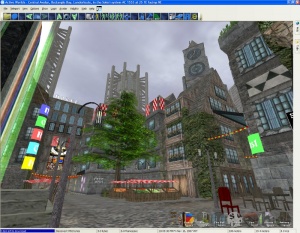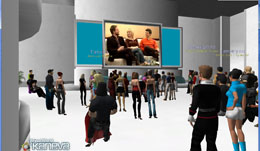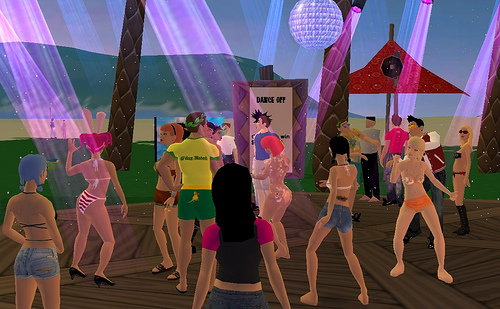
Vivaty
Vivaty, a company in the San Francisco area, has developed during the last two years a platform designed for rich web content and 3D experiences called “Vivaty Scenes“. The application was launched as a public beta on tuesday 8th July 2008 in AIM (AOL Instant Messenger) and in Facebook. Vivaty Scenes are realistic rooms that act as a virtual personal environment, a 3D version of your personal page. You can set the theme, decorate with furniture and other virtual goods, and chat with the avatars of friends who enter your room. You can bring in photos from Flickr and Facebook or videos from YouTube and display them on screens in your room. You can also play MP3 songs.
Vivaty Scenes is a platform which plugs straight and seamlessly into your already setup, defined and working social network. The program (a 4 MB player browser plug-in) currently only runs on Windows machines and in Internet Explorer, although Firefox and Mac versions of Vivaty Scenes are planned for release at a later date. 2 GB computer memory and 256 MB VRAM graphic card memory are recommended for using Vivaty Scenes.
The avatar associated with one user can be changed at any time, a richer avatar customization will be available in the future. Avatars can be moved with the mouse or with the directional keys. The viewpoint (camera position) can be changed with a mouse right click and drag & drop, with the mouse wheel you can pan in and out. Avatars can be animated with gestures and express their moods in idle animations (sad, angry, happy, …).
Scenes can be modified and customized at anytime, items can be changed and added. By double clicking on a media object (photo, photo gallery, video) the camera zooms in close but your avatar stays put. Some features of Vivaty Scenes are similar to Adobe Atmosphere discontinued on 19th december 2004.





